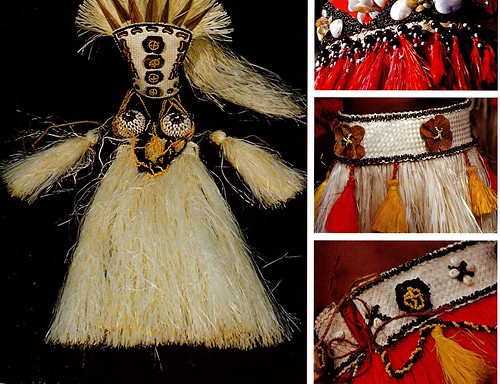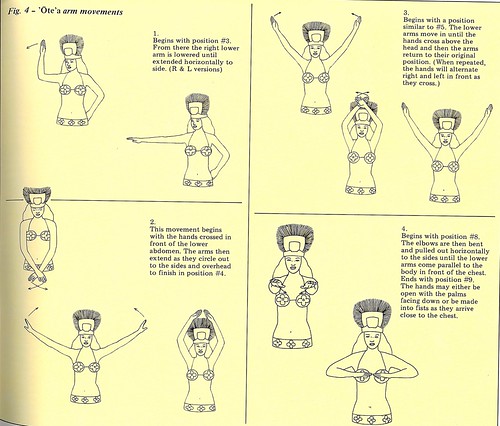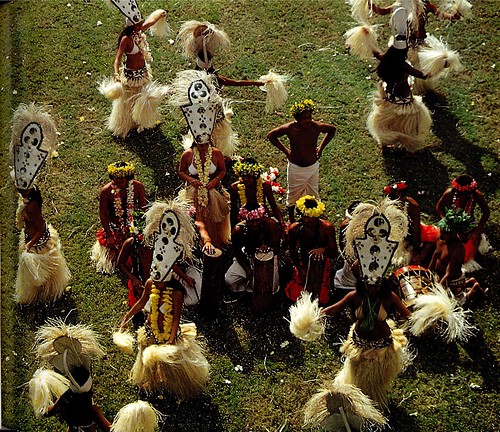July is one of my favorite months because it is Tahitian dance month. Well, at least it is in Tahiti where the annual Heive I Tahiti takes place. Kinda of the Olympics of Tahitian dance. Over the years I would try to figure out how I can watch as much of it online as possible. Things have gotten easier with youtube and now I follow a French Polynesian tv station on Instagram so I got to see clips all month.
My love of Tahitian dance was like all the things Polynesian that I am interested in, slow and evolving over the years. According to family lore, we went to Disneyworld when I was young (5?) and they said I could pick anything at the gift shop. I had a deep love of mice so they figured I would pick something Mickey. Well I picked a hula doll. I have no idea why. I was not the type of girl who ever, every wanted to play with dolls (except Barbie). I still recall what she looked like and seeing her at the store but then I no memory of ever seeing it again. Did my family go back and exchange it? I have no clue.
Then we had a trip to Oahu and Maui when I was in like 6th grade to slowly stoke the fires. But more recent (well 2002) they were offering Tahitian dance at my YMCA on Friday nights. I went and it was great. My teacher I later realized actually had her own Tahitian dance group and was kinda using the Y as a paid practice space. She even brought in live drummers. I loved the music and the drumming. I wasn't very good but didn't care. She later told me about the annual Tahitian Dance festival in San Jose, the Tahiti Fete. My husband and I went every 4th of July holiday since I think 2003 for years. Then they sometimes moved it to Hilo and we fell of going. I went this year and got to see...the Tahitian Dance group who I use to be in perform at the Fete.
Sadly, my YMCA class ended and I was left without a class for a few years. Then one night while walking to get some food I heard the sound of the pahu (sharkskin drum) coming from a Russian Ballet studio. I peered thru the blinds and saw a bunch of girls in pareaus Tahitian dancing. It took me a few more months to figure out who this group was and then I emailed them and asked if I could join and told them of my "experience". They let me in and I had much to learn. We did 1 hour of hula and 1 hour of ori and aparima (both Tahitian dancing). I stayed with them for 3 years and even performed twice on stage at the Palace of Fine Arts. I made some friends and learned a lot. I then had to leave the group because I switched jobs and can't make it to their Wednesday night practices anymore. I still go to their events and was thrilled to see them at the San Jose Fete.
But this is suppose to be a book review so let me get back to that. When I started collecting for the Bibliotiki I always had a focus on Tahiti but I never could find books about Tahitian Dance. I did eventually find this book online for like a $100. I am cheap so that wasn't going to happen. Then years ago we went to a musty bookstore on Oahu and I saw it behind the counter for $20. What a steal! To my knowledge there isn't really any other definitive book on the topic. The book was published in 1979 and the author started her research there in 1973 and stayed for 3 1/2 years. She wound up dancing with many of the groups and formed a touring group.
Despite owning this book for like 6 years I didn't read it until now. Kinda wish I read it when I was in my dance group. It shed a lot of light on why we were doing certain things and terminology used.
She covers the history of Tahitian Dance (which is actually called Ori Tahiti my kumu would like you to know), breaks down the dance types, instruments and costumes. By the early 1820's the Church was outlawing traditional dance. It would continue in secret (just like the Hula). But in the 1950's Madeleine Mou'a formed the first professional dance group on the islands. It took some time but it finally regained its place in the culture.
The costume chapter was interesting especially since I got to make a little of my costume when I was in my dance show. Nothing like the photo below, more just braiding leaves. These skirts are called more and are natural fibers and dyed with natural dyes.

She talks about all the rules surrounding the annual Heiva I Tahiti competition. No man made materials allowed, dancers have to dance entering and exiting the stage, the size of the group and etc.
She does seem saddened by how the dance has changed a bit to accommodate hotel shows. But overall I think the book holds it own in 2017.
She even has diagrams of the movements for men and women.

And it has a lot of nice group shots.

Sometimes these groups can have around 70 dancers and it is totally choreographed.
The book also helped me understand my South Pacific record collection (over on the Phonotiki) better. I also focus on music from Tahiti and now I realize I have many albums from many of the mover and shakers of the late 1960's-1970's who were keeping the dance alive (Coco!). I also learned a little more terminology of certain dance styles that are on the Lps.
Have a look at some videos here and Full Videos here.
And if you want to find out where you can see and learn Tahitian Dance click here.
Dr. Jane Freeman Moulin is a Professor of Music at the University of Hawaii at Manoa and is currently working on a book about Tahitian music.
